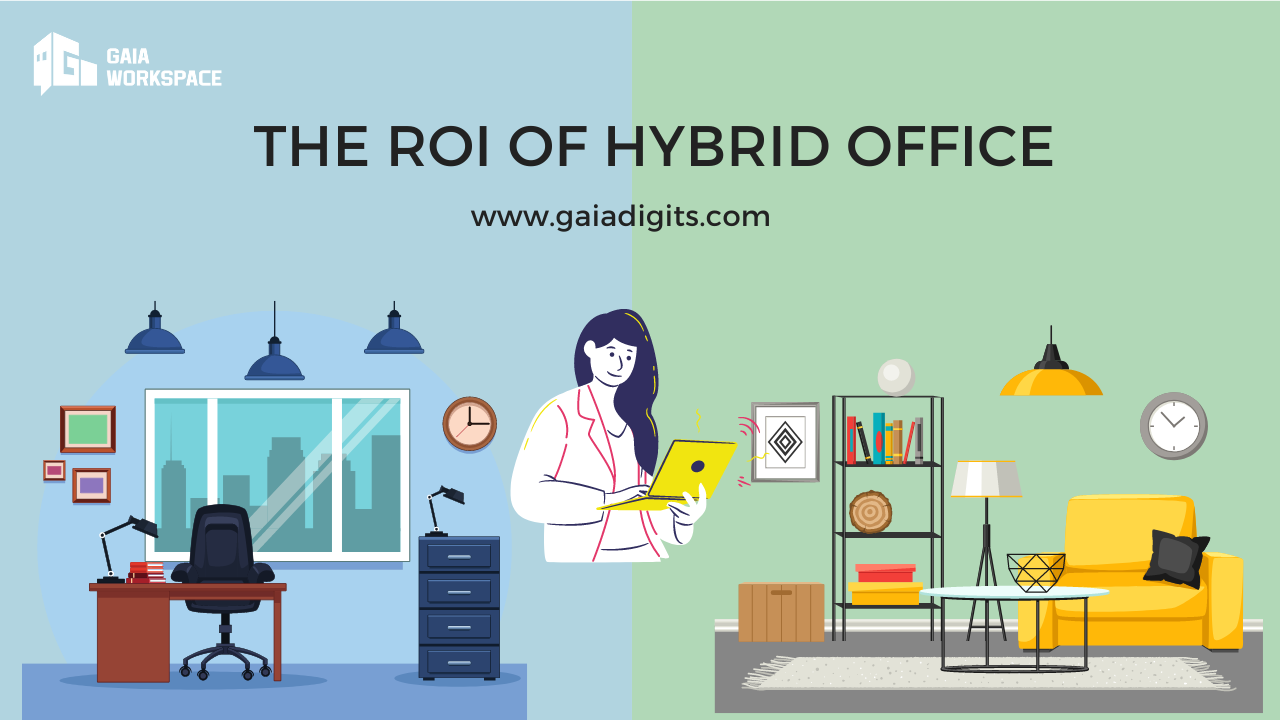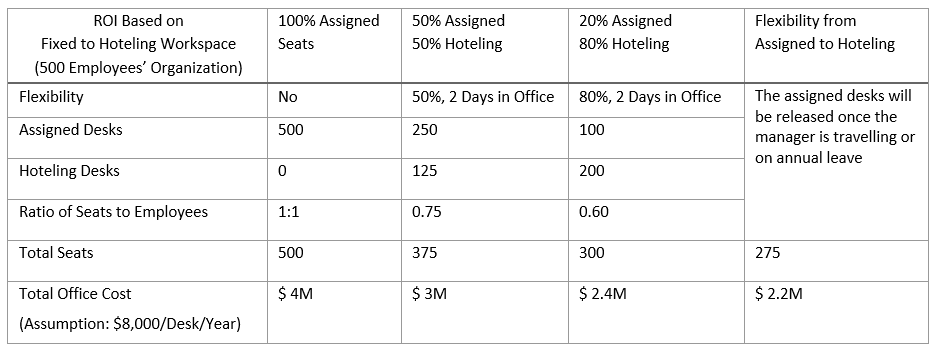The Hybrid office is a buzzword for a while; however, we need to think about why both employees and employers want a hybrid office mode. It was out of control when the COVID pandemic hit the economy and society at the end of 2019. Due to that, millions of people had to work from home or work remotely. That is a very quick and mandatory transit from traditional office mode to remote work, but this last for more than 2 years.
Now we have time to look over what went right, what could’ve worked better, and what our next steps should be to optimize our workforces and workspaces for a post-COVID era.
Once organizations plan their return-to-work strategies, they must keep in mind safety, flexibility, and the future of work. The post-COVID workspace requires organization operations to focus on two phases.
- The first phase is the safety of returning to the office with consideration of social distance, working flexibility and sanitizations work.
- The second phase is creating a hybrid workspace that supports both in person employees and remote workers and delivers enhanced workspace experiences.

Hybrid Office Evolution
Hybrid office mode evolved from flexible working mode before the Covid. It is widely accepted in IT, High-Tech, Consultancy and some financial industries many years ago. Especially in Nordic countries, a lot of organizations allow their employees to work from home for 1 day per week or even more. Here are how businesses transfer from office work mode to hybrid work mode, using my experience as an example.
When I worked in Sweden, I could choose to work from home maximum one day per week. And I also remember my employer would organize an in-person meeting for all the employees to share company operation status every quarter, so employees still need to go to the office to attend the meeting. Therefore, most employers start hybrid work mode by allowing employees to work from home 1-2 days/week. Most employees realize the benefits of hybrid work and the efficiency of the work is great, but they still need to spend some in the office physically to create a better collaborative team and office culture, so hybrid work gradually becomes a routine.
Based on the research by Gallup in March 2022, more than 53% of people prefer to work in hybrid and prefer 2+3 models[1]. Hybrid office mode can reduce unnecessary screen hours, it is also beneficial to employee mental health and decreases the mental pressures.
Another driving force is office utilization rate and vacancy. Covid changed the office mode, the office utilization rate hit as low as 40% in North America, which means more than 35% of the office investment is wasted. [2] Therefore, we need to make changes to save office investment, reduce carbon emissions, and also balance employee life and work.
Hybrid Office ROI
The hybrid workplace created a well-balanced work style that encapsulates the pre-COVID office trends and satisfies all modern office workers. This office mode was made to benefit employees, employers, and organizations.
Lower office investment
Organizations are seeing a major benefit with savings in their real estate (office rent). When employees are coming into the office for certain tasks or at different times and days, businesses don’t need to offer a fixed workstation per employee. Instead, when we schedule the facility correctly and time efficiently, the organizations can downsize their footprint but still provide enough space employees’ need.
The graph below shows the savings based on different scenarios:

.
Assumptions:
-
-
- The collaboration space was already considered will be increased after migration to hybrid office mode.
- The desk cost/year is $8,000 in North American or EU cities.
- Every desk or workstation has enough space.
-
Improve Employee Satisfaction & Well-being
Hybrid office mode balances employees’ work and life better by saving commuting costs, and being more flexible for doctor’s appointments and children’s schools. Furthermore, employees can better plan their work week and make their meetings and work more focused and efficient. Hybrid workplace gives employees more choices and flexibility, which improves their engagement and satisfaction.
How to Better Manage Hybrid Office
By this time, you know why you need a Hybrid Office and the ROI of the hybrid workspace, so it’s time you figure out your “How” as well:
-
-
- Give your employees the trust they need. Trust in the management and collaboration will lead to better productivity.
- Appropriate guidance in work will increase the efficiency of employees’ work.
- Choose a smart tool to help you better manage your hybrid office, such as room & desk booking software with analytics. Great tools help people make smarter decisions and save more money.
-
The hybrid office empowers employees with more flexibility to choose which day to go to office and when to work remotely. This balances their time between work and life. Most employees and companies now realize the benefits of hybrid work and it is time to think about how to implement it with the greatest efficiency.
About the author
Cheng is the founder & CEO of GaiaDigits Inc. He is also an international business traveller between North America, Europe, and Asia with business footprints in more than 30 countries. With over 20 years of business experience in the Software and Telecom & Communication Industry. He has handled and led the business in Canada, Sweden and China, plus managed the international market like East Europe, Mid East, North Africa, South America and China, etc. Along with his dynamic solution expertise and strong leadership skills, He is driven to bring innovative culture to solve complex and systematic problems with multi-cultural wisdom.
Email: cheng.ye@gaiadigits.com LinkedIn Profile: https://www.linkedin.com/in/cheng-ye-baa7204/
[1] Source, https://www.gallup.com/workplace/390632/future-hybrid-work-key-questions-answered-data.aspx [2] Source, https://cre.moodysanalytics.com/insights/cre-trends/where-office-vacancy-stands/
